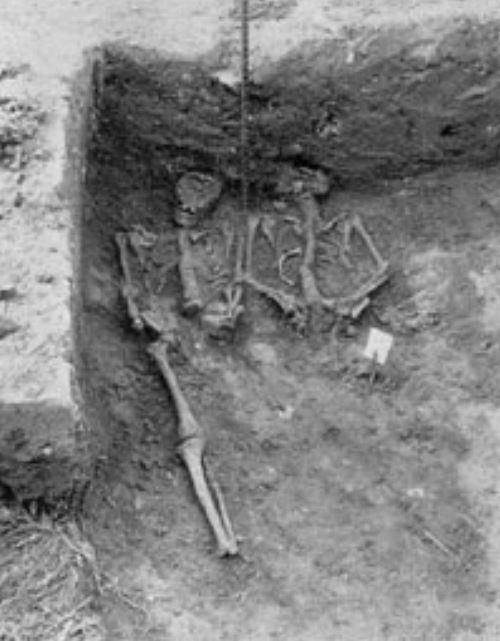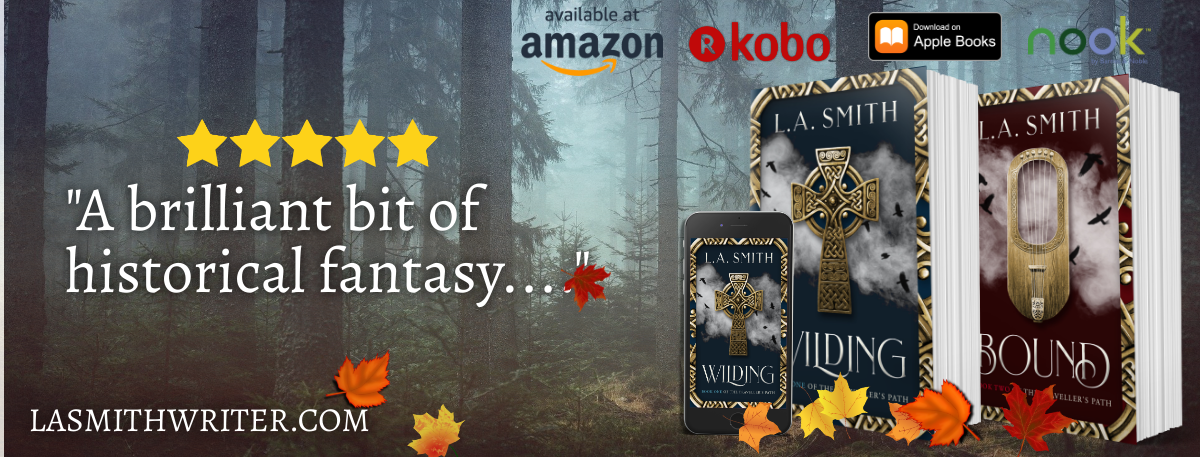
Newsletter
Yes! Send me my FREE short story collection and sign me up for those exclusive subscriber goodies!
We value your privacy, and will never spam you! View our privacy policy at lasmithwriter.com/privacy

Yes! Send me my FREE short story collection and sign me up for those exclusive subscriber goodies!
We value your privacy, and will never spam you! View our privacy policy at lasmithwriter.com/privacy
Note: this post is part of a continuing series on the Battles of Anglo-Saxon England, which includes the following posts:
Battles of Anglo-Saxon England: Weapons and Armour
Battles of Anglo-Saxon England: Badon
The Battle of Chester was a major victory for the Anglo-Saxons in the early 7th century against a combination of Welsh forces and possibly some of Mercia as well. It has some interesting features to explore. For one, it is the earliest British battle where the location is known, near the present-day city of Chester at what is now called Heronbridge. But more about that later.
Before I can give information about the battle itself, we have to take a few steps back and have a look at some of the background to the conflict and examine what we know about the main players.
This battle is mentioned in more than one ancient source. Most of what we know about it comes from the hand of Bede, who wrote about it in his Ecclesiastical History of t English People in AD 731, approximately one hundred years after the battle. Because of the fact that he uses British (ie Welsh/Celtic) names in the account, it is thought by some scholars that he had access to a British source for the account of the battle which has now been lost. So, it is likely that his account has some accuracy.
There is mention of the battle in both the 9th-century Anglo-Saxon Chronicle as well as in the Welsh Annales Cambriae (10th century), but in both these cases, it is merely a one-line account of it happening, without many details. There are also some one-line mentions of the battle in the histories of various Irish kingdoms.
Geoffrey of Monmouth’s Historia Regum Britanniae (12th century) includes a record of the battle, but because much of his work is seen as being more akin to fiction and myth than it is to actual facts, it’s difficult to ascribe much truth to what he says about it. However, in this case, it is possible he had some Welsh sources that Bede did not, which might account for the conflicting details in his account.
So, back to Bede. While he gives us an obviously carefully researched and extensive account of the battle, keep in mind that he wrote with various agendas in mind, too. In particular, part of the reason for his book is to demonstrate the superiority of the Roman Catholic practice of the faith over the (in his mind) errant Irish church practices. This is a theme that runs through much of the beginning of the Ecclesiastical History as he recounts what happened in England before the Roman church gained superiority over the Irish one.*
In this case, the battle is framed in the light of an earlier occurrence, that of the arrival of Augustine in Britain in AD 597 as a missionary sent from Pope Gregory. But the British church, established during the Roman occupation, was still thriving, so the Irish church was slightly hesitant of this newcomer muscling in on their territory so to speak. Bede recounts the meeting between Augustine and a delegation of Irish clergy, in which the Irish are bested by Augustine in a display of miracles (in other words, God proves that he is in favour of Augustine and not the Irish) and they retreat to consult with an elder bishop who encourages them to return for another meeting. This second meeting possibly took place at Chester, where there was a large and thriving British monastery nearby at Bangor. The Irish monks were charged by their elder to judge Augustine’s humility, counseling them that if Augustine rises at their entrance, showing them honour, they are to listen to him, but if he remains seated, they must dismiss his claims.
Unfortunately, Augustine does not rise at the entrance of the British clergy, and thus they refuse to listen to Augustine’s entreaties that they abandon their Irish Celtic practices regarding the dating of Easter and their distinctive tonsure (the two biggest differences) in favour of the Roman ways. There seems to be anger expressed by both sides, and at the end of the debate, with no capitulation by the monks, Augustine metaphorically washes his hands of the recalcitrant British churchmen and states that because they would not listen they would suffer war from their enemies, and because they would not join with him in preaching to the English, the English would bring death to them.
Flash forward some nineteen years, to the year AD 616, when there was a large battle between the combined forces of the Welsh kingdoms of Gwynedd, Powys, and Rhos against Æthelfrith of Bernicia. Looking back at this battle from the 8th century, when Bede was writing his history, he infers that this battle was the fulfillment of God’s judgment spoken by Augustine against the British monks. He does this because in the course of the battle a contingent of monks from Bangor were slain by Æthelfrith because they were part of the British forces. Not as combatants, at least not physical ones. They were there to pray for the success of the Welsh against the Angles. As Bede recounts it, Æthelfrith spots the monks standing apart from the gathered British warriors. He asks who they are and discovers that they were priests from Bangor, praying for the success of the British.** Bede then recounts Æthelfrith’s response and details what happened next:
“If they are praying to their God against us, even if they do not bear arms, they are fighting against us, assailing us as they do with prayers for our defeat.” So he ordered them to be attacked first and then he destroyed the remainder of their wicked host, though not without heavy losses.
Æthelfrith emerges the victor of this battle against the British, neatly tying up Bede’s summary of the event as a fulfillment of Augustine’s prophecy against the heretical Irish church.
Bede doesn’t give us an explanation for the battle aside from that one. In fact, its a bit of an odd explanation, for Æthelfrith was a pagan, and although the accounts vary about it, there is consensus that he killed a number of monks in his victory. Bede goes so far as to call the monks that wicked host, which seems a bit harsh. But with Bede mainly silent on the causes of the battle, we have to turn to what we do know to figure out exactly why these two armies met on that fateful spring day.
First of all, Chester, which is on the borderland between present-day England and Wales, is a long way south from Northumbria. Why has Æthelfrith mustered a large army to go all that way across hostile enemy territory? It’s interesting to note that this was not the first battle that Æthelfrith fought against the British. He had been successful in other battles before, gaining the nickname, “Fleseur” or “the Twister” from the British, indicating a perhaps wily and duplicitous nature. Bede says that Æthelfrith, a pagan king, “ravaged the Britons more than all the great men of the English”, so he was clearly a formidable fighter. He also conquered other Anglo-Saxon kings and in AD 604 gained control of Deira (the southern half of Northumbria), possibly by conquest. Edwin, son of the former king of Deira, then went into exile as a child. However, some historians speculate that Edwin might have been part of the opposing Welsh coalition forces at the Battle of Chester, which could explain Æthelfrith’s motivation for this fight: to rid himself of a powerful rival.
Other facts that we do know include:
Before we leave this intriguing battle, I can’t let you go without mentioning one of the really interesting things about it. I stated at the beginning that this is the earliest British battle where the exact location is known. That is because, in 1929 archeological digs in the Roman remains around Chester (which had been an impressive Roman site before the Anglo-Saxon period) discovered a mass grave of bodies buried in the Roman ruins. Analysis at the time of the remains concluded that they were men between 20 and 40 who had been killed in a battle or massacre of some sort, due to the injuries on the skeletons. But over the subsequent years the location of the bodies was lost, until the early 2000s when another excavation discovered a defensive rampart built during the 7th century (likely built before or after the battle) as well as the graves.

Some of the skeletons from the Heronbridge graves. Image from Wikipedia.
The bodies had been placed side by side, some overlapping, with no grave goods. Injuries were consistent with battle wounds, many of them died from a blow to the head. Others had healed wounds, indicating they were warriors, as did the fact that their skeletons showed heavy musculature. Due to the care in which the bodies were laid in the grave, it had been speculated in 1929 that these were some of the dead from the victorious Northumbrian army. When the bodies were re-discovered, radio-isotope analysis of the men’s teeth confirmed that indeed they had hailed from Northumbria. Approximately thirty skeletons were found between the 1929 excavation and the modern-day one.
Fascinating, no? As always, there is so many gaps in our knowledge, so many tantalizing details that escape us. But how amazing that these long-dead warriors can still provide important clues as to what took place so many years ago.
***
*Side note: you might wonder why Æthelfrith doesn’t know these are monks. Surely he could tell from their dress? Well, not really. At this time the monks did not have different garments from laypeople. They were only to dress simply, without ostentation. They could have been wearing hoods, disguising their tonsures.
**Although, to be fair, as I have mentioned before, Bede did have admiration for many of the Irish clergy, especially Aidan, even holding them up as examples of disciplined devotion to Christ, which he saw lacking in his own church at times.
Note: this post is part of a continuing series on the Battles of Anglo-Saxon England, which includes the following posts:
Battles of Anglo-Saxon England: Weapons and Armour
Battles of Anglo-Saxon England: Badon
Can’t get enough of Anglo-Saxon England? Check out my books, Wilding and Bound, part of a historical fantasy trilogy set in 7th-century Northumbria, and featuring a young man whose shadowed destiny leads him to the past…and could change our world forever.
Book Three coming 2021!
